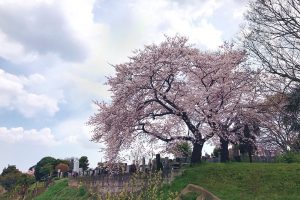Today on My Poetic Side we look at the relationship of the Wordsworth siblings and the experience of Sakura.
Relationship Between Wordsworth and his Sister Explored
 William Wordsworth and his sister Dorothy were close, and the relationship between the two has often been debated. A new exhibition that has opened up at Wordsworth House and Garden has been put together to take a closer look at the siblings – the nature of their relationship is often the source of many questions for the staff at the museum.
William Wordsworth and his sister Dorothy were close, and the relationship between the two has often been debated. A new exhibition that has opened up at Wordsworth House and Garden has been put together to take a closer look at the siblings – the nature of their relationship is often the source of many questions for the staff at the museum.
The siblings suffered a deep trauma during their early childhood, William was 8 and Dorothy 7. Their mother died and for 9 years they were sent to live with separate relatives because their father was unable to cope with his grief.
Dorothy was sent from one set of relatives to another with little stability offered in her early life, she was what would now be referred to as highly strung as a result of this. Her bond with William was all that she could remember. When they were finally reunited it is understandable that they became particularly close.
This closeness between the siblings wasn’t always harmonious. When William got married things became a little strained between the two. However, Dorothy continued to live with William and his wife and things were amicable.
The “Sakura” Experience in Tokyo

Processed with VSCO with a6 preset
Visitors to the Yanaka Cemetery in Tokyo are greeted with a view of the cherry blossoms. This is, in fact, the final resting place of the person whose face appears on the front of the 5000 yen note.
It might sound a little morbid, but the fact that people flock to the cemetery to visit the graves is little different to those literary fans who flock to Oscar Wildes tomb in the Père Lachaise Cemetery, Paris or Pablo Nerudas last resting place in Santiago, Chile. Finding and then visiting the graves of poets and writers has been something that fans of the written word have been doing for a long time.
Ichiyo Higuchi, the poet and writer from the Meiji era, is the face that appears in the 5000 yen note. She is only the third woman to have ever been featured on a banknote in Japan and for over a century Ichiyo Higuchi – the pen name of the writer Natsu Higuchi, has been buried there.
Yanaka is a special cemetery, in addition to the poet there are also a number of other Japanese people of note buried here including Togugawa Yoshinobu, the last shogun of the Tokugawa shogunate. The cemetery is something of a labyrinth because there are over 7000 graves there. The Sakura blooms are planted all over the cemetery. The sight of the blossom is also a significant draw during the spring.
In Japan, it is normal to combine the act of paying respects to someone who is no longer with us with the activity of looking appreciatively at the cherry blossoms. In fact, the Japanese have a word for it – hanami or cherry blossom viewing.


You must register to comment. Log in or Register.